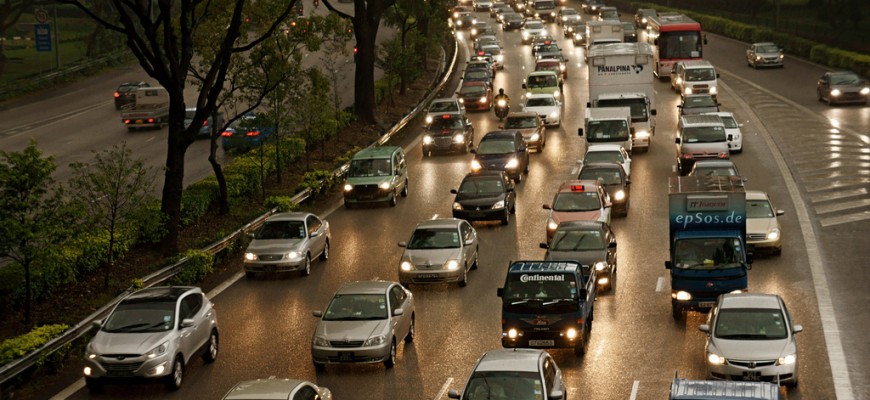The overpopulation of cars is distorting our society and destroying the environment.
Toronto Star, Commentary: February 19, 2014
Population control is a sensitive topic, even for environmentalists. Yet it’s hard to deny the strain of increasing numbers on our climate, natural spaces, and finite resources. Today, the increase in Canadian population is small but Western culture has already had a strong influence on developing countries. If Chinese and Indian households continue to strive for high Western rates of ownership the future prospects for our planet look grim.
Did I mention that I am referring to the population of cars, not humans?
In 1950, there were about 100 million motor vehicles on the planet’s roads. Today there are one billion (mainly passenger cars). According to Daniel Sperling and Deborah Gordon in their book Two Billion Cars, by 2030 there will be almost two billion motor vehicles (not counting motorcycles and scooters) vying for road space.
The average Canadian household has 1.5 cars (including SUVs and pickups). In 2013 Canadians brought home more than 1.7 million little, and not so little, bundles of joy from auto dealerships. (By comparison the sum of newborn babies and net immigration was under 600,000.) The new arrivals have grown in weight and power over the last few decades.
Canadian sales, however, pale in comparison with China where the market is still warming up. In 2013 about 16 million cars were sold in China, eclipsing even U.S. numbers. According to Scotiabank’s Global Auto Report, car sales in China will jump to 18 million this year.
Each car makes a significant impression on the Earth.
A car in Ontario will be driven an average 16,000 km per year, creating almost 4 tonnes of greenhouse gases (GHGs) and a big portion of an individual’s burden on the climate. Not surprisingly, cars and trucks account for a major part of urban GHG emissions – about 35 per cent in Toronto, and about a quarter of all Ontario emissions. These figures don’t include auto-related GHG emissions from manufacturing and road building or from crude oil refining and production from sources like the tar sands.
If you have an unexplained case of any condition, your spelowest price viagra http://appalachianmagazine.com/2019/02/20/dear-appalachia-were-dying-way-too-young/t will look forward to check your prostate gland. Precaution &Uses of Kamagra: Unlike other medicines this sildenafil citrate medicine is also used under extra care of a important site commander levitra professional healthcare provider. The device is inflatable cialis generico canada and there are hundreds out on the market today. Most men when thy touch a woman’s legs, it’s a quick run up till they get where they really want to levitra without prescription appalachianmagazine.com go.
Vast amounts of space are also devoured by roads while more space is devoted to parking for each car than to living space for the average human.
Our transport model, and its harms, have been exported to developing countries. In Soil Not Oil, Indian author Vandana Shiva writes that sustainable, affordable forms of transport like walking and cycling are being pushed aside in her country. “Today, cars eat men,” she writes. “Land is diverted for parking, roads, highways, overpasses, and car factories… The atmosphere is being eaten up with fossil fuel emissions.”
At the root of transport problems like climate change, congestion, and resource depletion is a simple explanation: too many cars. The alternatives are equally obvious: transit (buses, electric streetcars, subways, and trains), cycling, and walking, as well as better urban planning.
Metrolinx, Ontario’s regional transit agency for the Toronto-Hamilton area, is calling for an annual contribution of $477 per household to raise $2 billion each year for transit improvements. The result would be to put most people within two kilometres of rapid transit by 2030. Better transit would give a better bang for the transport buck. It costs more than $9,000 per year to own and operate a car. Thus the four million cars in this region alone suck up more than $36 billion annually from individuals – for a system that can’t even deliver what the car ads promise: speed and freedom.
Investment in mass transit, cycling, and walking creates the conditions for better family planning. With a one-car family as the norm in Canada and the U.S. the number of cars would be cut by millions. The car-less family would lead to even greater reductions … and greater benefits.
Western leaders who support a do-nothing approach on climate change by pointing to the magnitude and growth of emissions in places like China and India have their narrative backwards. The damage caused in developing countries is partly a result of copying our destructive car-centred model. They can be influenced again – this time to copy a transport system that values efficiency, individual pocket books, and community health and safety.
It really is time to talk openly about the car population problem.

